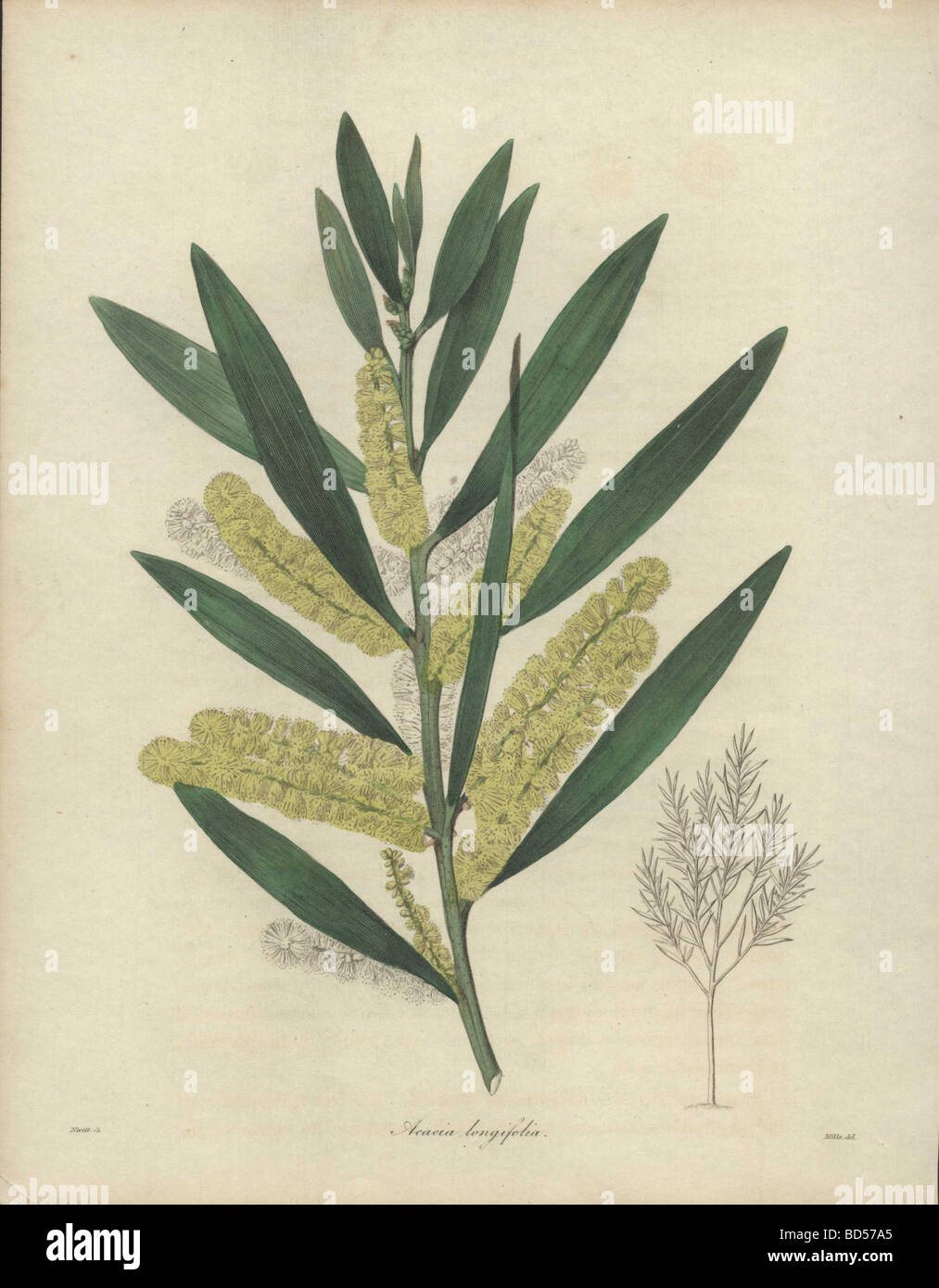Fine copperplate engraving of a yellow-flowered acacia tree (Acacia longifolia) from "The Botanist" (1836).

Image details
Contributor:
Florilegius / Alamy Stock PhotoImage ID:
BD57A5File size:
20.3 MB (667.9 KB Compressed download)Releases:
Model - no | Property - noDo I need a release?Dimensions:
2352 x 3016 px | 19.9 x 25.5 cm | 7.8 x 10.1 inches | 300dpiDate taken:
1585Photographer:
FlorilegiusMore information:
This image could have imperfections as it’s either historical or reportage.
Benjamin Maund's "The Botanist" was a five-volume series that introduced 250 new plants from 1836 to 1842. The series is notable for its many female artists: the plates were drawn by Maund's daughters Sara and Eliza, Augusta Withers, Priscilla Bury, Jane Taylor, Miss R. Mills among others. The other characteristic is partial colouring - many of the finely detailed copperplate engravings are left with part of the flower and leaves uncoloured. Priscilla Bury (1793~1869) began painting flowers from a young age, particularly the exotic flowers growing in the hothouses on the estate. In 1830, she married Liverpool railway baron Edward Bury, and with his financial support, published "A Selection of Hexandrian Plants" containing 51 plates of lilies, amaryllis and crinums. Augusta Innes Withers (1793~1877) taught botanical art, and later became Flower Painter in Ordinary to Queen Adelaide. During the 1830s and 40s, she drew for books and magazines such as Lindley's "Pomological Magazine, " Curtis's "Botanical Magazine, " and "Transactions of the Horticultural Society." Benjamin Maund's daughters Sarah (1819~1909) and Eliza contributed illustrations to later volumes of their father's books. Jane Taylor (active 1836~1842) was painter of still lives and contributor of flower drawings to the Society of British Artists in London. Miss R. Mills (active 1836~1842) was the main illustrator for Knowles and Westcott’s "The Floral Cabinet" (1837-1842).